Western Region: Geography
From snow-covered peaks to sun-scorched deserts, the Western Region of the United States offers some of the most dramatic landscapes in the country. This Grade 4 geography video helps students explore the natural variety of the American West — including towering mountain ranges, active volcanoes, coastal cliffs, valleys, and plains. It’s a scenic journey designed to spark curiosity and support regional geography lessons.
🧭 Discover the Western Region Geography Video for Kids
Students will examine how landforms like the Sierra Nevada, Cascade Range, and Rocky Mountains have shaped both natural ecosystems and human settlement. The video also introduces the region’s diverse climate zones — from rainy coastal forests to the arid Great Basin and the frozen reaches of Alaska. Along the way, learners will see how climate influences everything from crops and tourism to wildlife habitats.
🌋 This Western Region geography video for kids also explores the region’s rich supply of natural resources, such as timber, seafood, minerals, oil, and fertile farmland. Students will discover how these resources are used by people and industries in Western states, and how geography continues to play a central role in the economy and daily life of the region.
🏆 Ideal for Grade 4 social studies or geography standards, this video pairs rich visuals with engaging narration that holds student attention. It brings textbook concepts to life and helps teachers build foundational knowledge before diving deeper into history, civics, or economics units focused on the Western U.S.
Companion video to:
Western Region: Early Beginnings
Video Length: 33:20 minutes.
Worksheets
Quiz
Western State Study
Utilizing the Land and Water
Predicting Weather
Draw a Scene
Universal Resources
National Standards
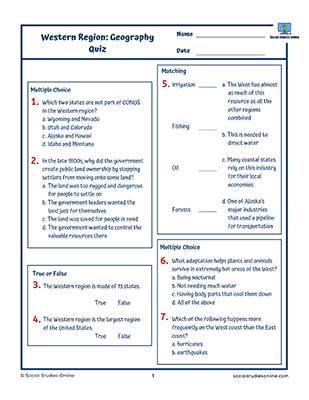

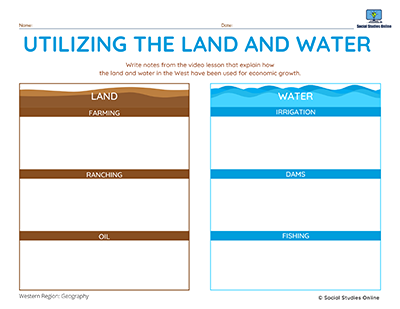

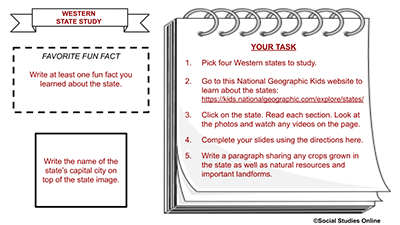

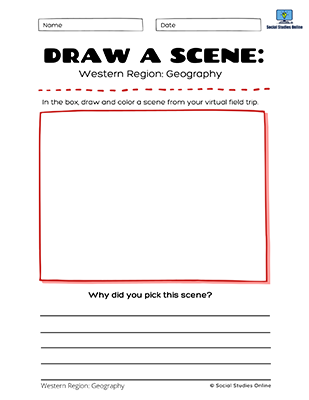

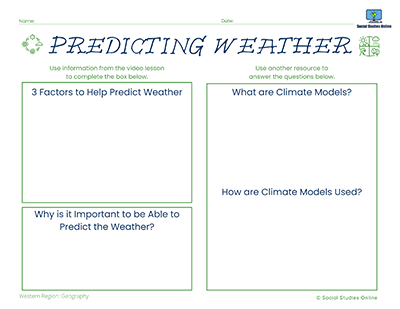

Video Subscriptions
When you only need one video- Unlimited viewing of 1 video
- Post-trip quiz + resources for 1 video
- Access to Closed Captioned version of 1 video
- Lowest-cost option
Teacher + Class Subscription
Teacher + Students- Unlimited access to the entire video lesson library
- All quizzes + learning resources
- Access for 1 teacher + all students
- Access to all Spanish videos + resources
- Access to all Closed Captioned videos
- Best value option for one teacher
School-wide Site License
All teachers + All students- Unlimited access to the entire video lesson library
- All quizzes + learning resources
- Access for all teachers and all students
- Access to all Spanish videos + resources
- Access to all Closed Captioned videos
- Best for school administrators supporting their teachers & students
- Up to 500 students – $450/year
- 500-1,000 students – $600/year
- 1,000+ students – $1,000/year
Topics Covered
The meaning of CONUS
Mountain states vs. Pacific states
Natural Resources in the West:
-Minerals
-Land (farming, ranching, public land)
-Forests
-Water (irrigation, dams, fishing)
-Oil
Climate
-Factors affecting climate (elevation, latitude, etc.)
-Unique climatic zones
-Precipitation
-Rain shadow effect
-Earthquakes
Plants & Animals of the West
-Bears (polar, brown, grizzly, black, Kodiak)
-Mountain Mammals (bison, elk, moose, cougar)
-Desert animals
-Hawaiian life
Classroom Ideas
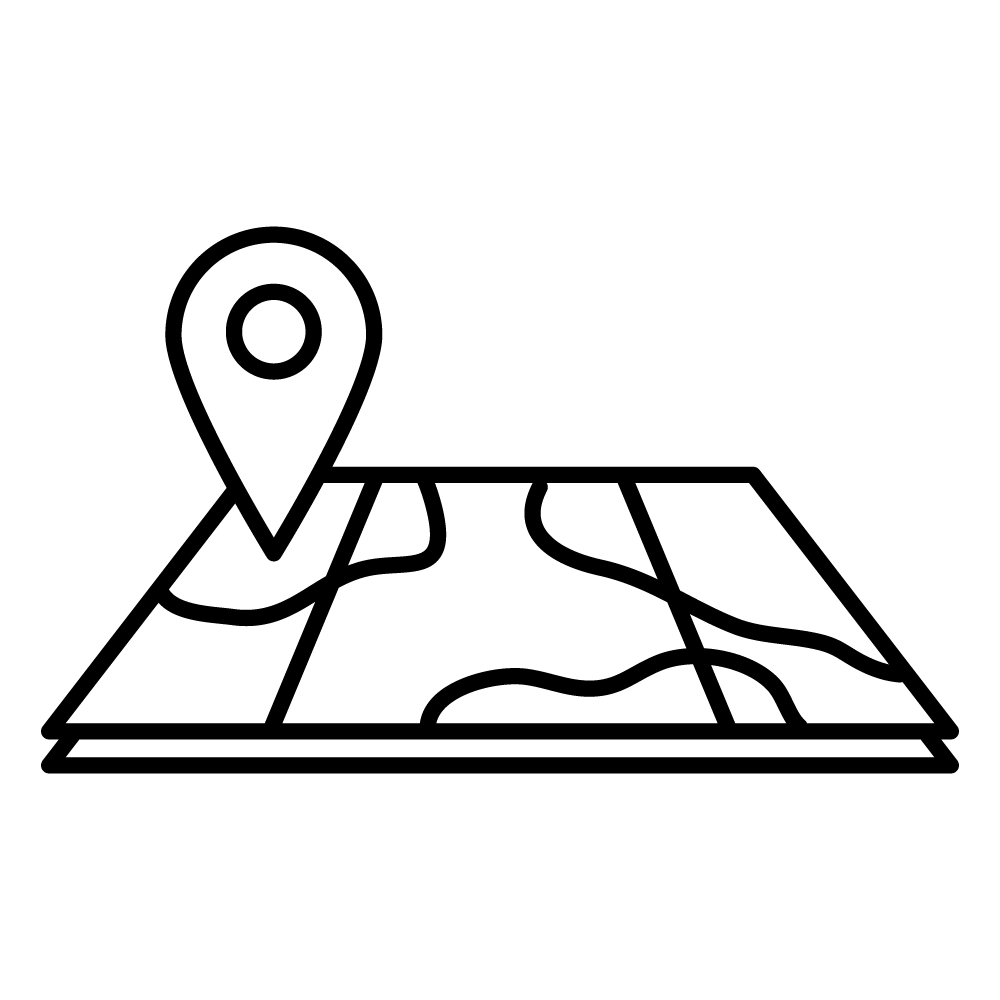
Landforms and Bodies of Water
Print out or look at a map of the Region.
Idendify landforms and bodies of water in the Midwest.

Cloze Practice
A cloze piece has full sentences used in the video lesson with blanks where students can write in the information that is missing. This task requires close listening in order to complete it.

Create Quizzes
Students create a quiz based on the information presented for their peers. This can be used as a review for a test, or jigsaw class activity where students are responsible for teaching other students assigned topics.

Visual Learning
Offer videos to struggling learners as another form of creating knowledge and accessing information.

Art and Social Studies
Draw a scene from the video you just watched.
Classroom Ideas for ALL Videos
Dozens and dozens of ideas that you can use in your classroom along with our videos!
Related Videos
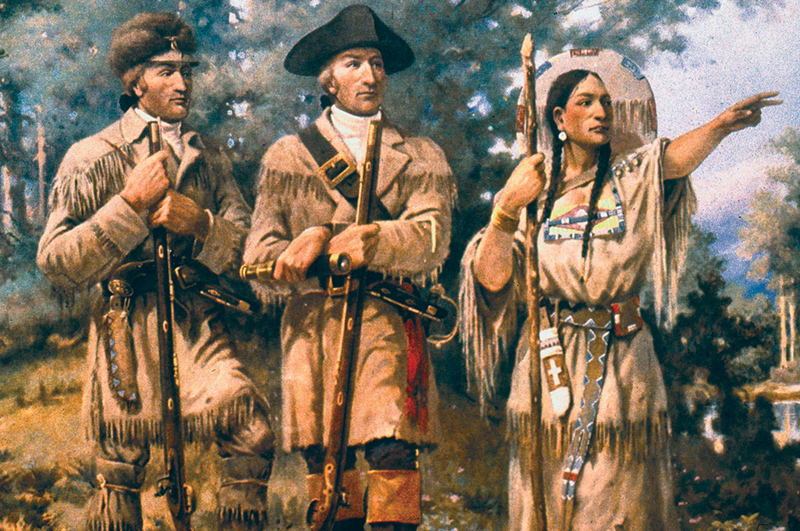
Grade 4 - Western Region of the US: Early Beginnings
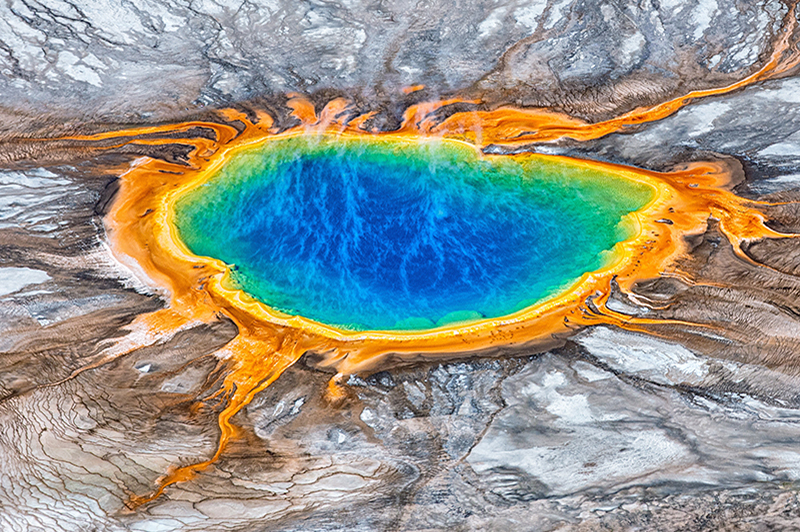
Grade 4 - Western Region of the US: Landforms
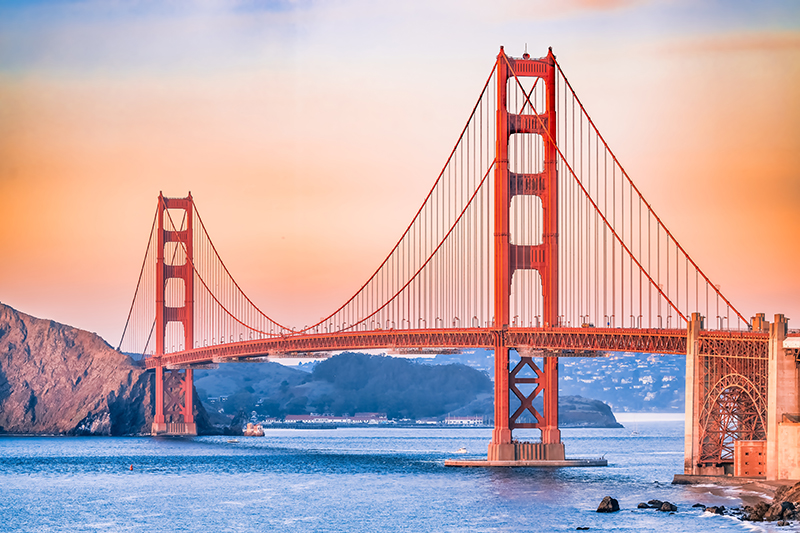
Grade 4 - Western Region of the US: Today
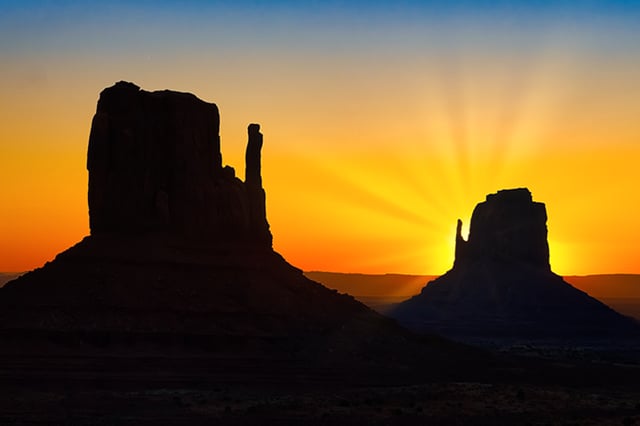
Grade 4 - Southwest Region of the US: Today
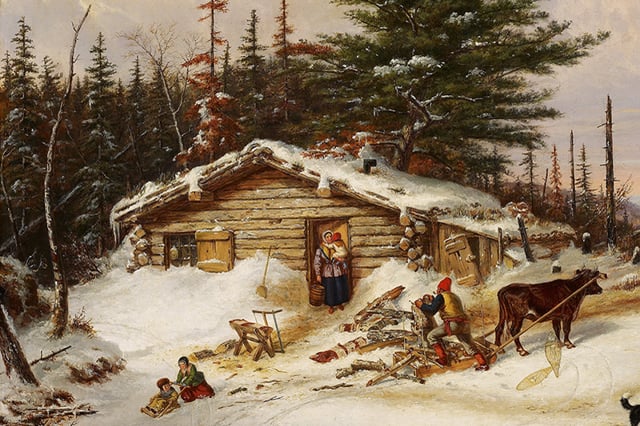
Grade 4 - Midwest Region of the US: Early Beginnings
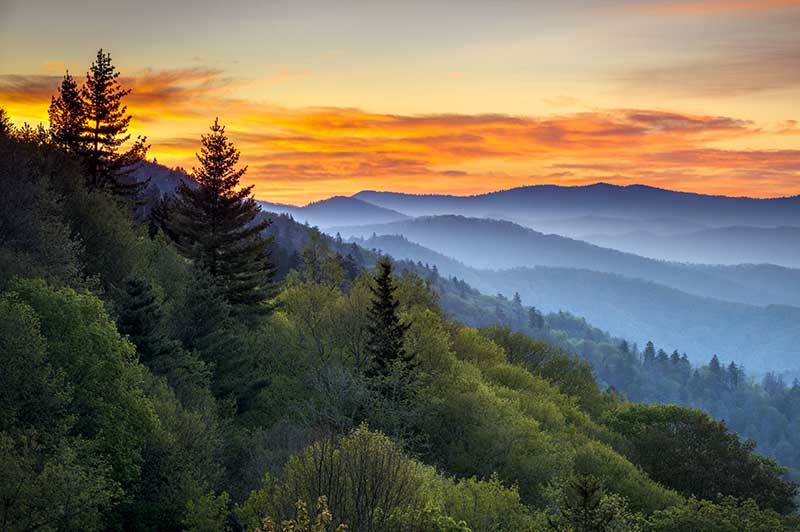
Grade 4 - Southeast Region of the US
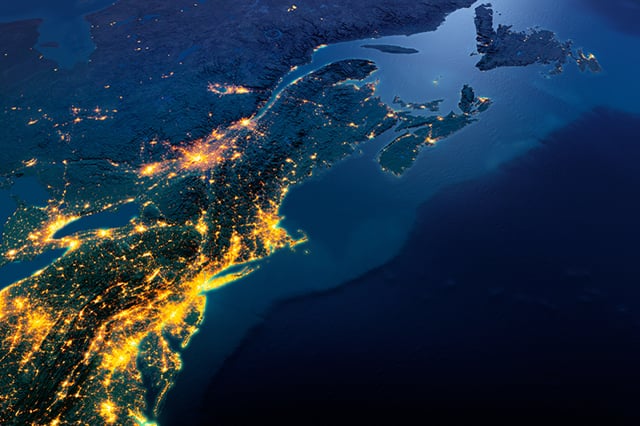
Grade 4 - The Northeastern Region of the US
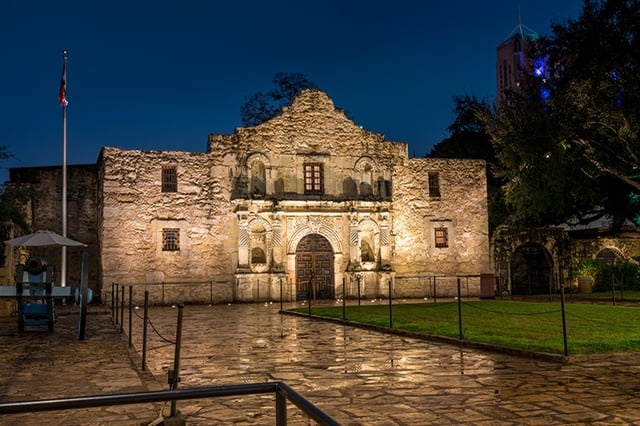
Grade 4 - Southwest Region of the US: Early Beginnings
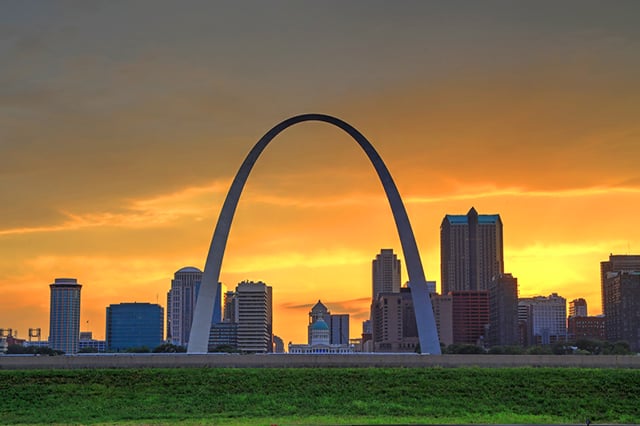
Grade 4 - Midwest Region of the US: Today

Grade 3 - The Geography of Our Communities
Video Subscriptions
When you only need one video- Unlimited viewing of 1 video
- Post-trip quiz + resources for 1 video
- Access to Closed Captioned version of 1 video
- Lowest-cost option
Teacher + Class Subscription
Teacher + Students- Unlimited access to the entire video lesson library
- All quizzes + learning resources
- Access for 1 teacher + all students
- Access to all Spanish videos + resources
- Access to all Closed Captioned videos
- Best value option for one teacher
School-wide Site License
All teachers + All students- Unlimited access to the entire video lesson library
- All quizzes + learning resources
- Access for all teachers and all students
- Access to all Spanish videos + resources
- Access to all Closed Captioned videos
- Best for school administrators supporting their teachers & students
- Up to 500 students – $450/year
- 500-1,000 students – $600/year
- 1,000+ students – $1,000/year


